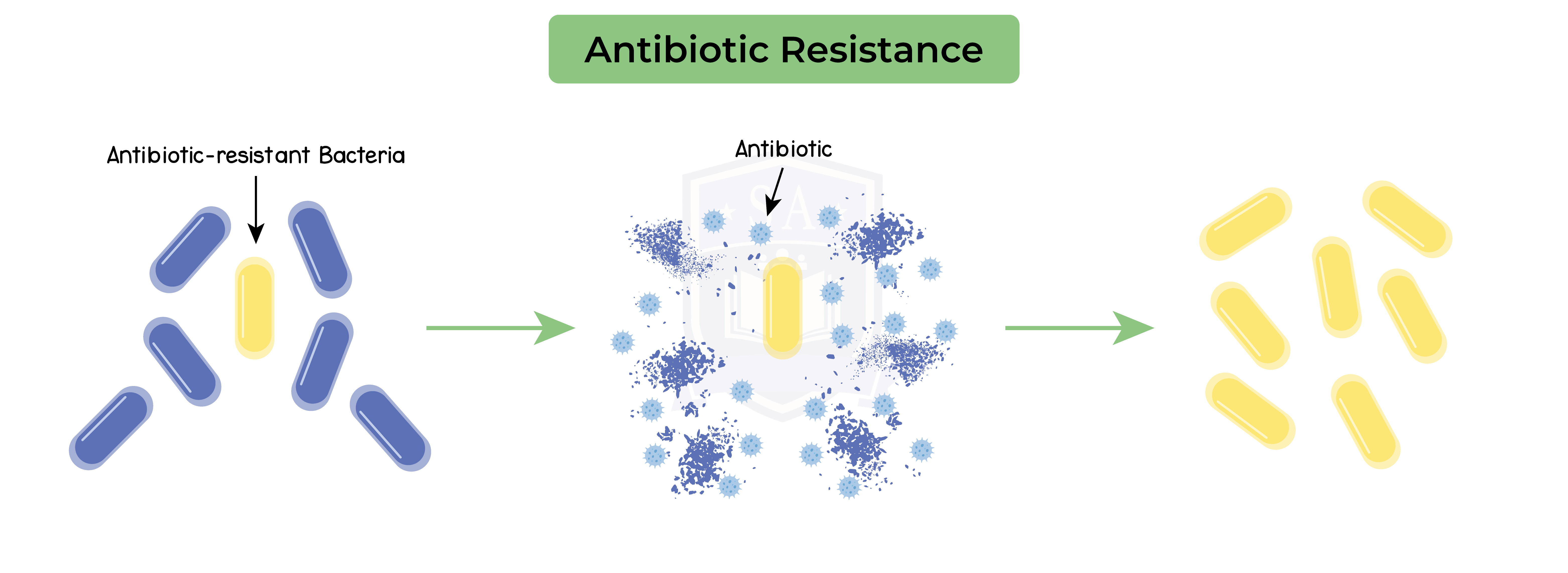REVISION NOTES
IGCSE Edexcel Biology
3.3 Inheritance
3.3.1 Understand that the genome is the entire DNA of an organism and that a gene is a section of a molecule of DNA that codes for a specific protein
Genome:
- Known as the entire set of genetic material that an organism has
- A gene is a section of the DNA coding for a specific sequence of amino acids
- The sequence of amino acids dictates protein coded
3.3.2 Understand that the nucleus of a cell contains chromosomes on which genes are located
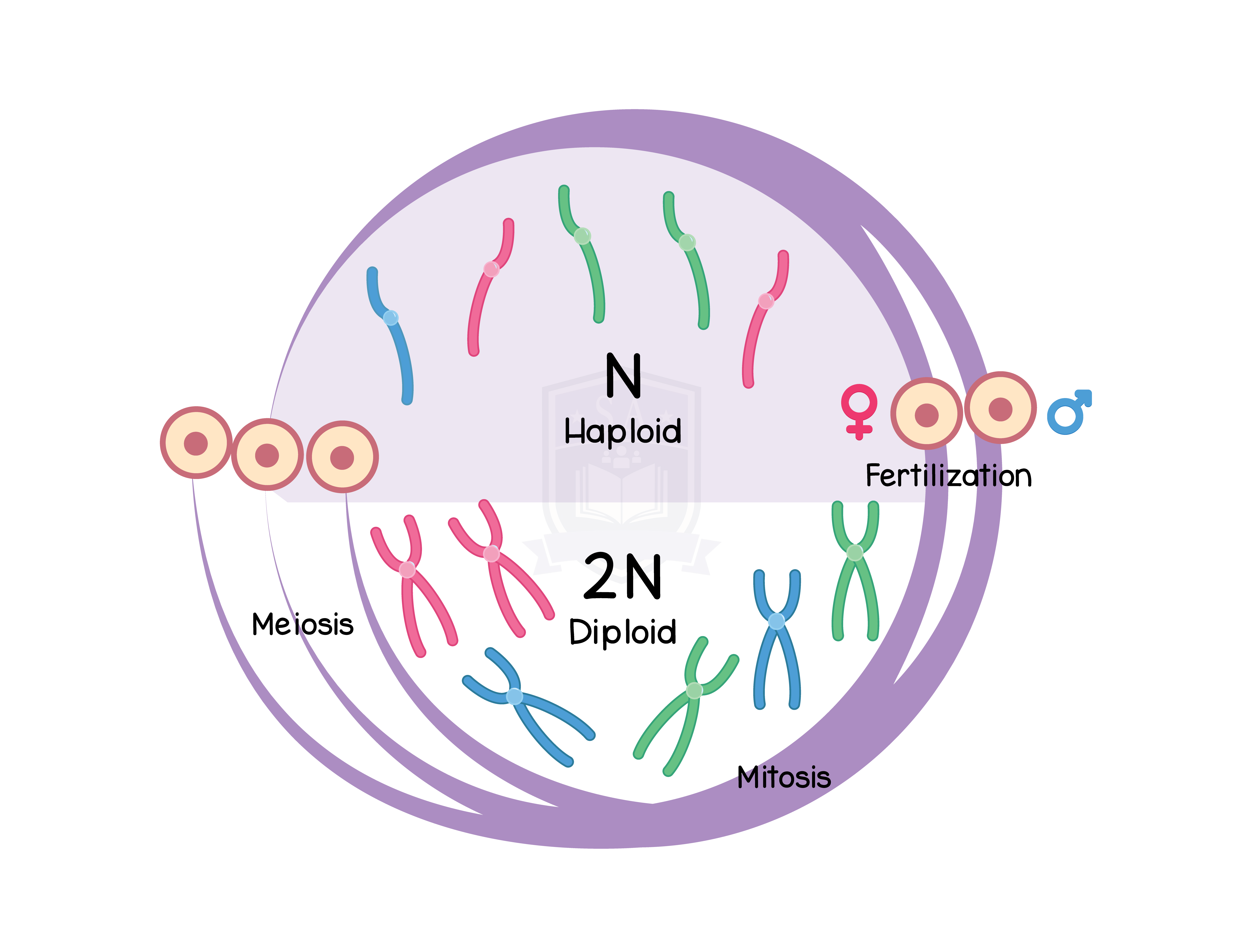
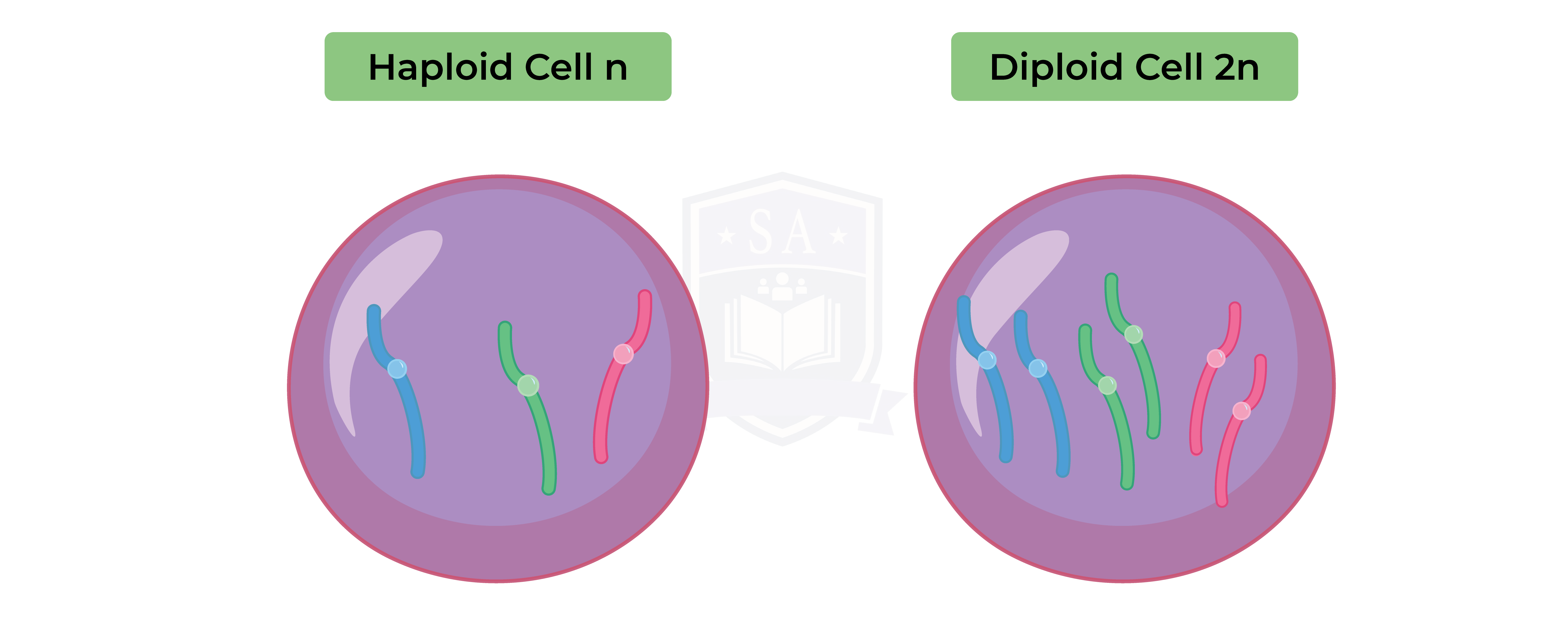
Chromosomes:
- DNA is located within the nucleus in a structure called chromosomes
- Chromosomes are supercoiled versions of the DNA double helix
- Human cells contain 23 pairs of chromosomes
- One chromosome in the pair is inherited from each parent
- Diploid cells contain a full set of 46 chromosomes
- A pair of chromosomes is called a homologous pair
- The 23rd chromosome pair consists of the sex chromosomes
- Females have two X chromosomes
- Males have one X and one Y chromosome
- Gametes are haploid cells
- Contain 23 chromosomes
3.3.3B Describe a DNA molecule as two strands coiled to form a double helix, the strands being linked by a series of paired bases: adenine (A) with thymine (T), and cytosine (C) with guanine (G)
DNA structure:
- Deoxyribonucleic acid (DNA) is a double stranded polymer
- Has a double helical structure
- Strands are made up of a sugar phosphate backbone linked to a nucleic acid (base)
- Two strands are linked to each other by complementary base pairing
- Adenine and thymine
- Complementary base pairing allows for cell division and protein synthesis
- Each strand acts as a template to create a new double helix
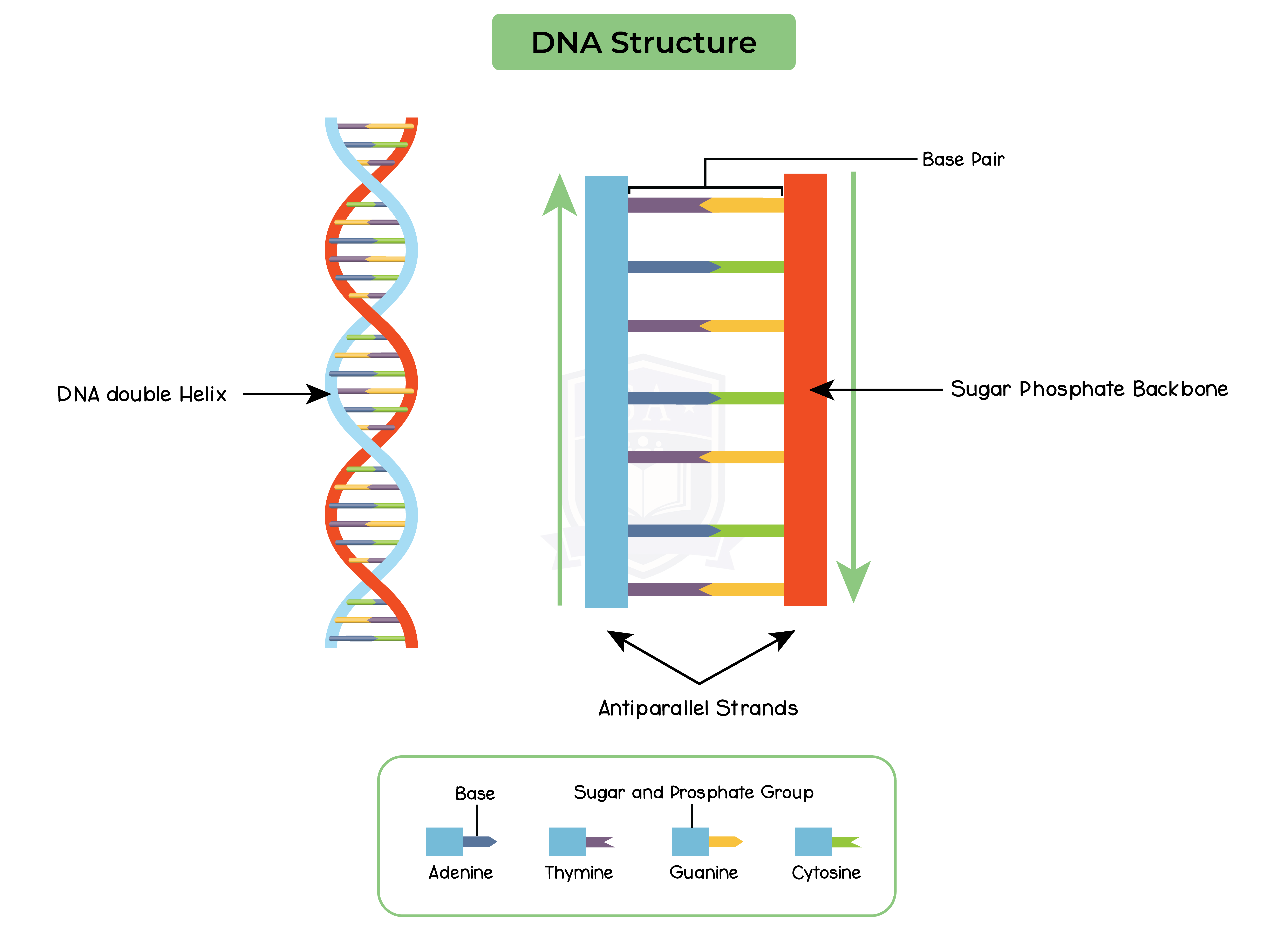
3.3.4 Understand that an RNA molecule is single stranded and contains uracil (U) instead of thymine (T)
RNA:
- Ribonucleic acid (RNA) is a single stranded polynucleotide
- Contains nitrogenous bases similar to DNA:
- Adenine
- Guanine
- Cytosine
- Contains Uracil in replacement of Thymine
- Consists of alternating:
- Ribose sugars
- Phosphate groups with nucleic acids projecting outwards
- Multiple types of RNA exist in the body:
- Messenger RNA (mRNA) used for gene transcription
- Transfer RNA (tRNA) used for protein synthesis
- Ribosomal RNA (rRNA) involved in protein synthesis

3.3.5B Describe the stages of protein synthesis including transcription and translation, including the role of mRNA, ribosomes, tRNA, codons and anticodons
Protein synthesis:
- Occurs in two stages:
- DNA is transcribed to produce an mRNA
- mRNA is translated into an amino acid sequence to form a protein
Transcription:
- Part of the DNA near the gene unwinds
- Hydrogen bonds between complementary base pairs are broken
- The target gene is then exposed to be transcribed
- Complimentary copy of the gene is made as mRNA using nucleic acids
- mRNA molecule leaves the nucleus through a pore in the nuclear membrane
Translation:
- mRNA attaches to a ribosome once it leaves the nucleus
- tRNA molecules carry specific amino acids to the ribosome attached to target mRNA
- tRNA molecules contain a triplet of unpaired bases (anti-codon) and an amino acid binding region
- The anticodon binds to its complementary codon on the mRNA molecule
- Two tRNA molecules attach to the ribosome at once
- Brings their respective amino acids in close proximity
- Peptide bond formation occurs between the two amino acids
- The first tRNA leaves and is replaced by another tRNA
- This process continues until the stop codon is detected
- Amino acid chain formation is stopped
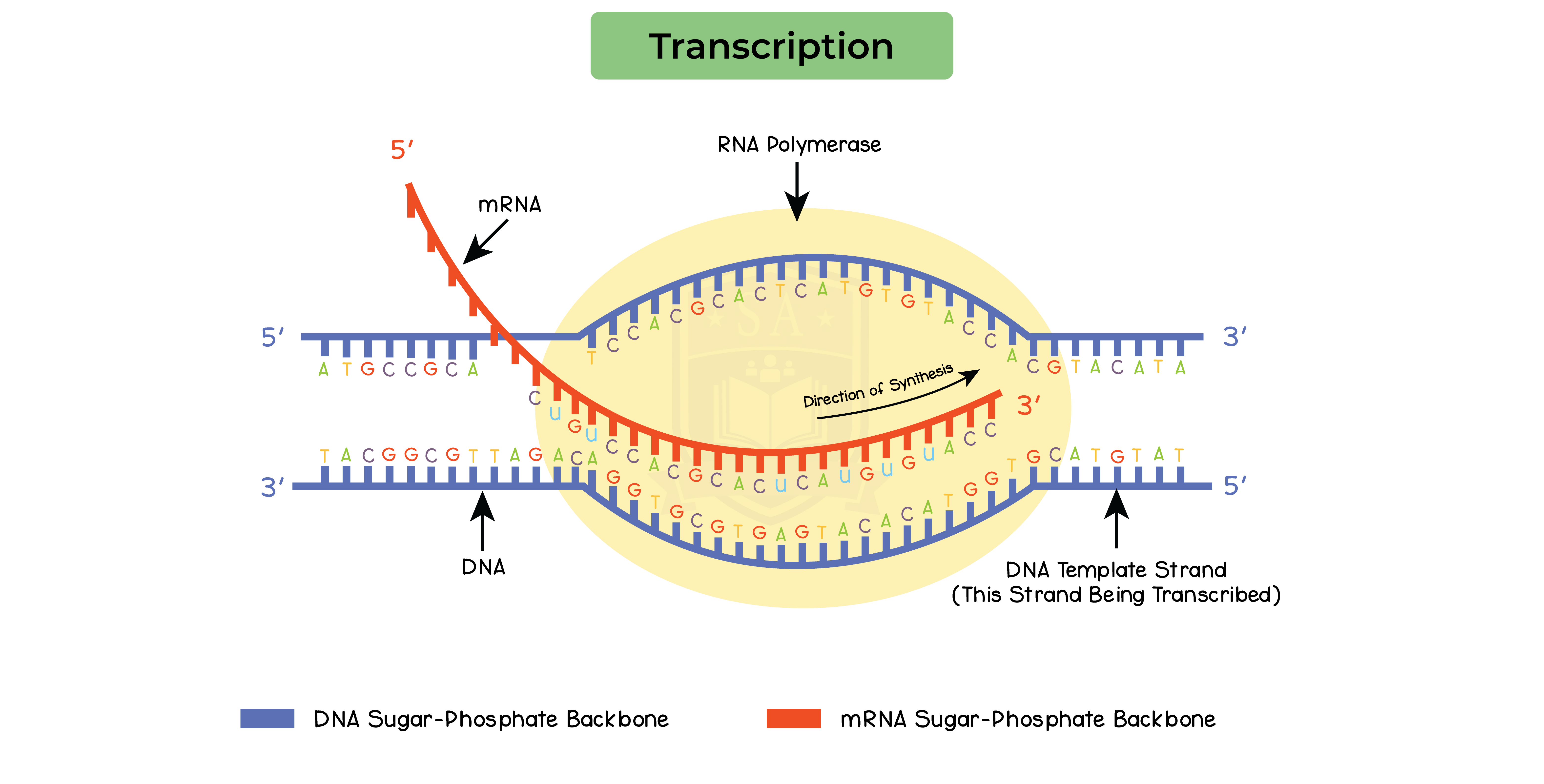
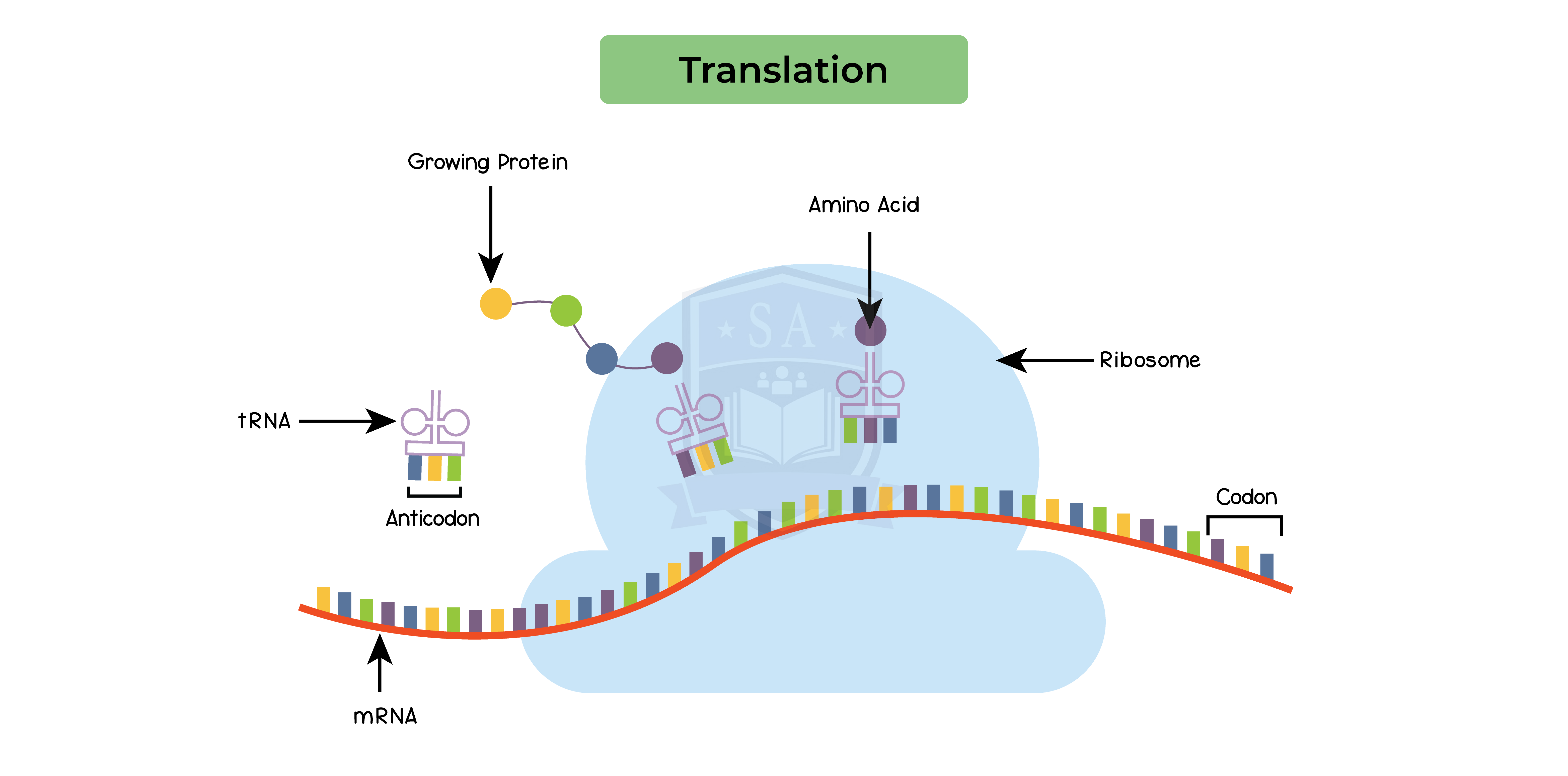
3.3.6 Understand how genes exist in alternative forms called alleles which give rise to differences in inherited characteristics
Alleles:
- Different versions of the same gene
- Create variation in genetic inheritance
- We have two copies of each chromosome giving us:
- Two copies of each gene
- Each copy is called an allele
- An allele is inherited from each parent
- E.g. a section of the gene codes for eye colour:
- Individuals have different alleles
- Same gene leading to different eye colours in a population
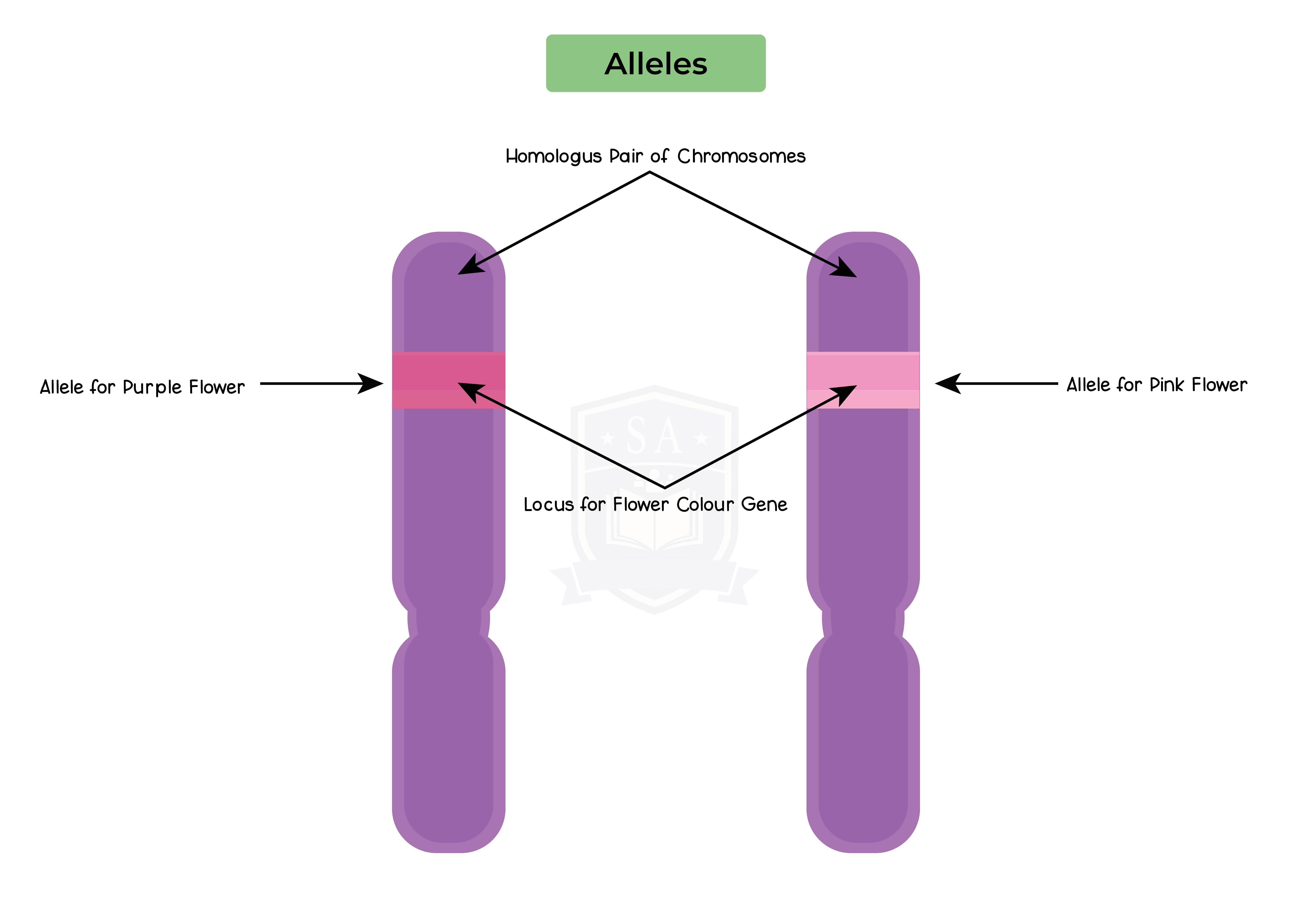
3.3.7 Understand the meaning of the terms: dominant, recessive, homozygous, heterozygous, phenotype, and genotype
Dominance and recessiveness:
- Alleles can be dominant or recessive
- Dominant alleles
- Characteristic is expressed when inherited from at least one parent
- Recessive alleles
- Characteristic is expressed when inherited from both parents
- If one recessive allele is inherited, the dominant allele’s characteristic will be expressed
- Homozygous alleles is when you inherit 2 alleles of the same type
- Heterozygous alleles is when you inherit 2 allele of different types
- Genotype is the combination of alleles inherited
- Cannot be determined based on phenotype
- Phenotype is the characteristic expressed

3.3.8B Understand the meaning of the term codominance
Co-dominance:
- Co-dominance is when two different alleles of the same gene are expressed simultaneously
- E.g. blood group has co-dominant alleles
- Both type A and type B are codominant
- Either one is still dominant over blood type O
- IA codes for the production of antigen A
- IB codes for the production of antigen B
- IO codes for no antigen production
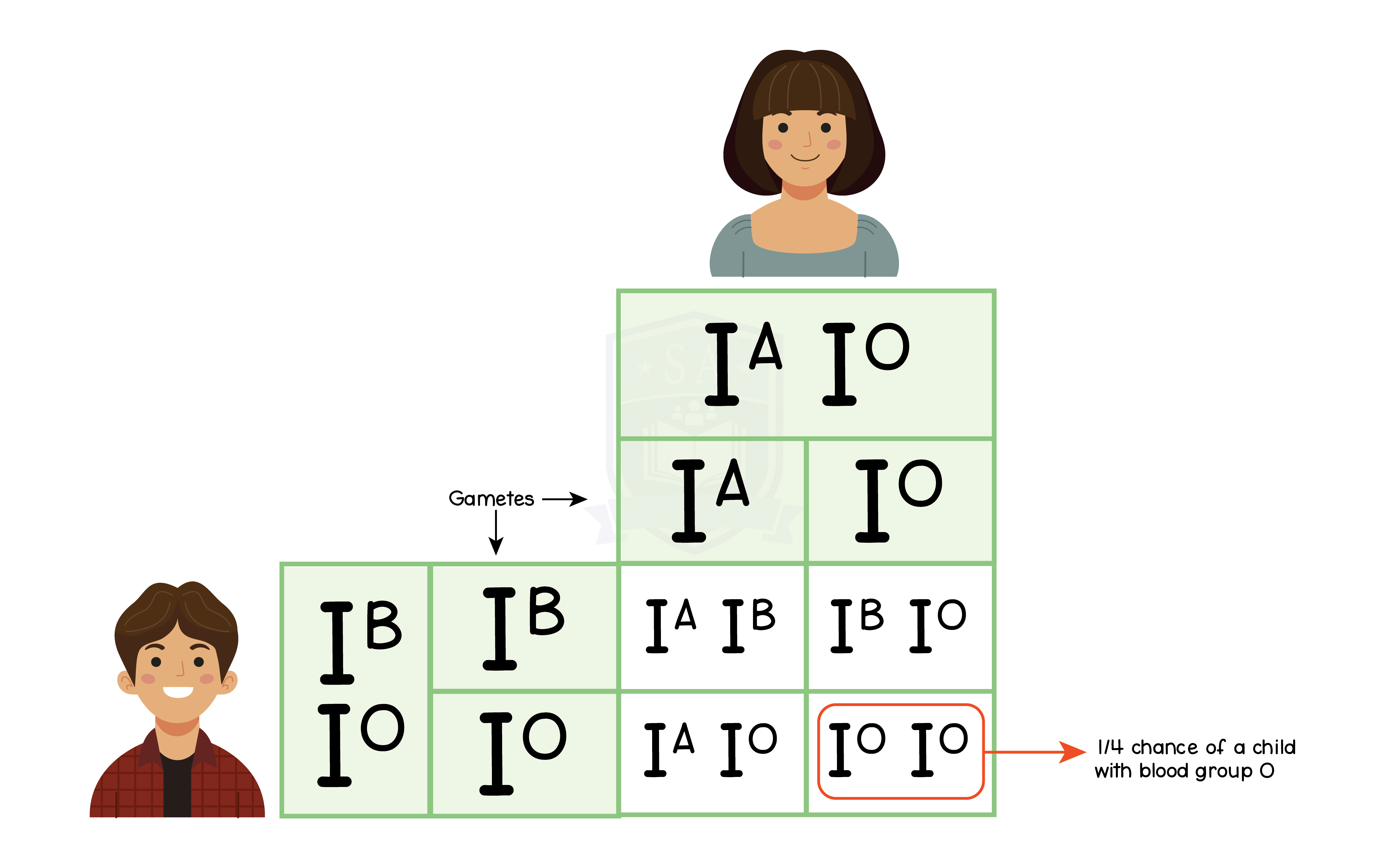
3.3.9 Understand that most phenotypic features are the result of polygenic inheritance rather than single genes
Polygenic inheritance:
- Genes interact with each other
- Most characteristics observed are due to the expression of multiple genes
- Polygenic traits rely on the expression of more than one gene
- Polygenic traits tend to have a wide variety of combinations
- Difficult to predict through genetic diagrams as many genes are involved
- E.g. eye colour
- Brown eyes are dominant to blue
- Polygenic trait where green, hazel and many other shades between blue and brown eye colours are present in various populations
3.3.10 Describe patterns of monohybrid inheritance using a genetic diagram
Monohybrid inheritance:
- Inheritance of characteristics expressed by a single gene
- Can be calculated using a punnett square (genetic diagram)
- Possible combinations of alleles that can be inherited are shown
- Dominant allele is in capital letters and recessive allele is in lower case
E.g. monohybrid inheritance in pea plants
- E.g. height of pea plants is controlled by two alleles: tall and short
- Tall allele is dominant, small allele is recessive
Breeding two homozygous plants:
All offspring would have tall phenotype and a heterozygous genotype
Breeding two heterozygous plants:
- Phenotypically 3 plants would be tall and 1 plant would be short
- 3:1 ratio in dominant to recessive phenotype
- 1 would be homozygous dominant, 2 would be heterozygous dominant, 1 would be homozygous recessive
Breeding a homozygous with a heterozygous plant:
- 50% chance of tall and 50% chance of short phenotype
- 2 would be heterozygous dominant and 2 would be homozygous recessive
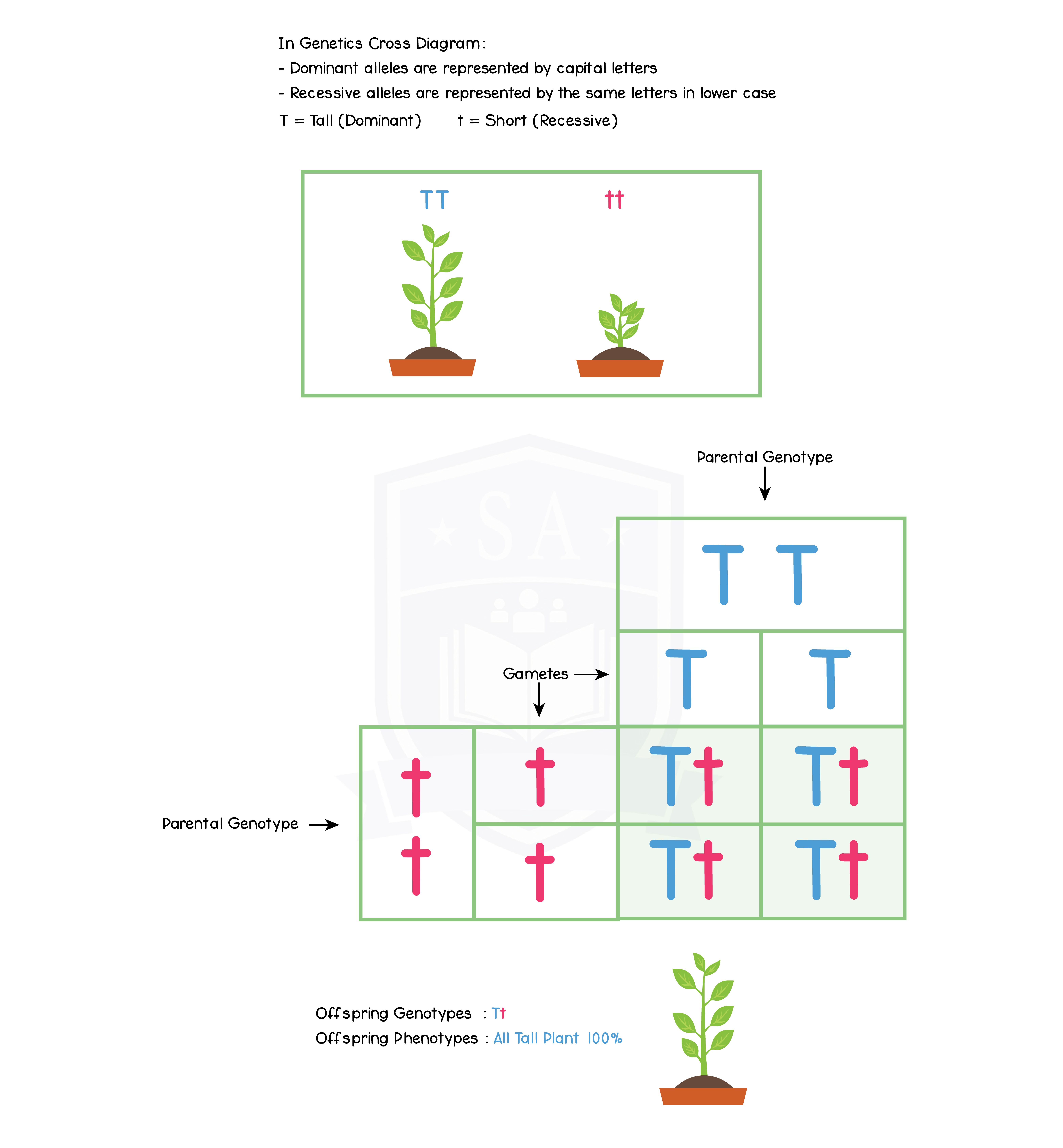
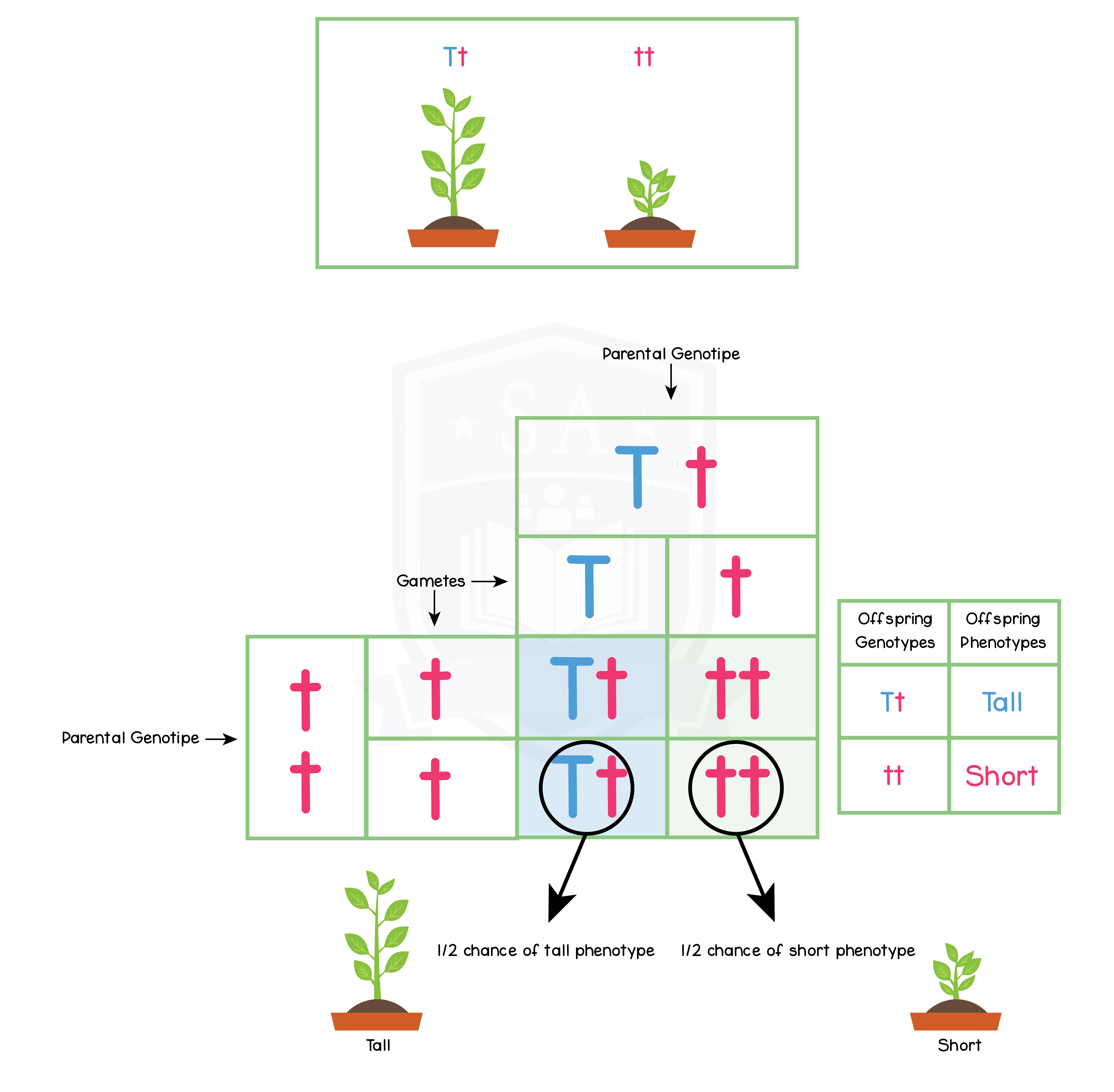
3.3.11 Understand how to interpret family pedigrees
- Squares indicate males, circles indicate females
- Red indicates affected individuals, blue indicates unaffected individuals
- Varies based on diagrams
- Should be written in the legend
- Horizontal lines between male and female indicate breeding
- Children are indicated below each couple
- Assists in tracing patterns of inheritance through multiple generations
- Can help calculate probability of inheriting genetic disorder
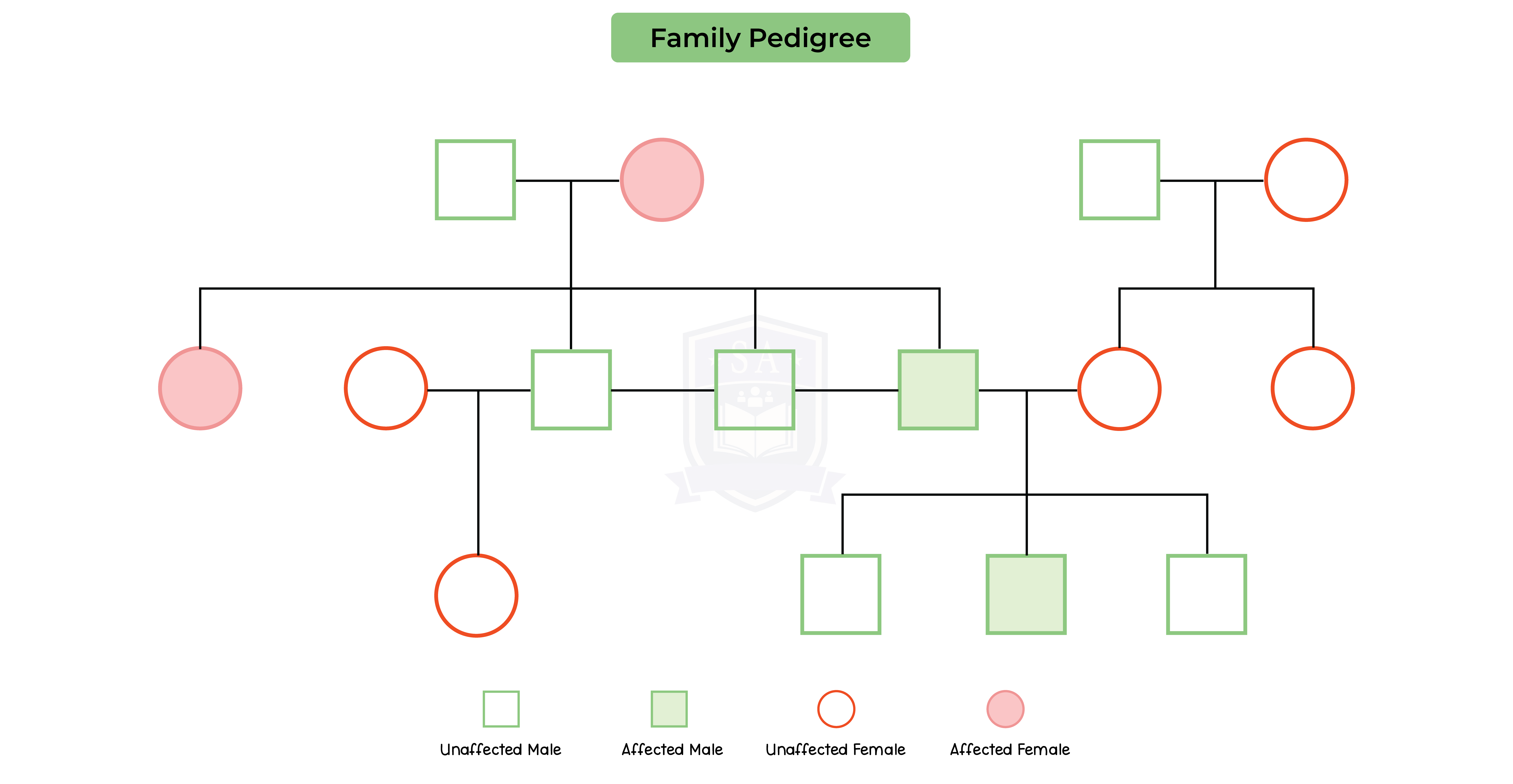
3.3.12 Predict probabilities of outcomes from monohybrid crosses
Predicting probabilities:
- Homozygous dominant crossed with homozygous recessive:
- 100% offspring expressing dominant phenotype
- 100% genotype is heterozygous dominant
- Heterozygous dominant crossed with heterozygous dominant:
- 75% offspring expressing dominant phenotype
- 25% recessive phenotype
- 50% heterozygous genotype
- 25% homozygous dominant genotype
- 25% homozygous recessive genotype
- Heterozygous dominant crossed with homozygous recessive:
- 50% offspring expressing dominant phenotype
- 50% recessive phenotype
- 50% heterozygous dominant genotype
- 50% homozygous recessive genotype
3.3.13 Understand how the sex of a person is controlled by one pair of chromosomes, XX in a female and XY in a male
Determination of sex:
- Determined by chromosome pair
- Females have chromosomes XX
- Males have chromosomes XY
- Male are responsible for sex determination
They are the only one that can pass on the Y chromosome
- Half of the sperm carries X chromosome, half carries Y chromosome
Depending on the sperm that fertilises the egg, sex is determined
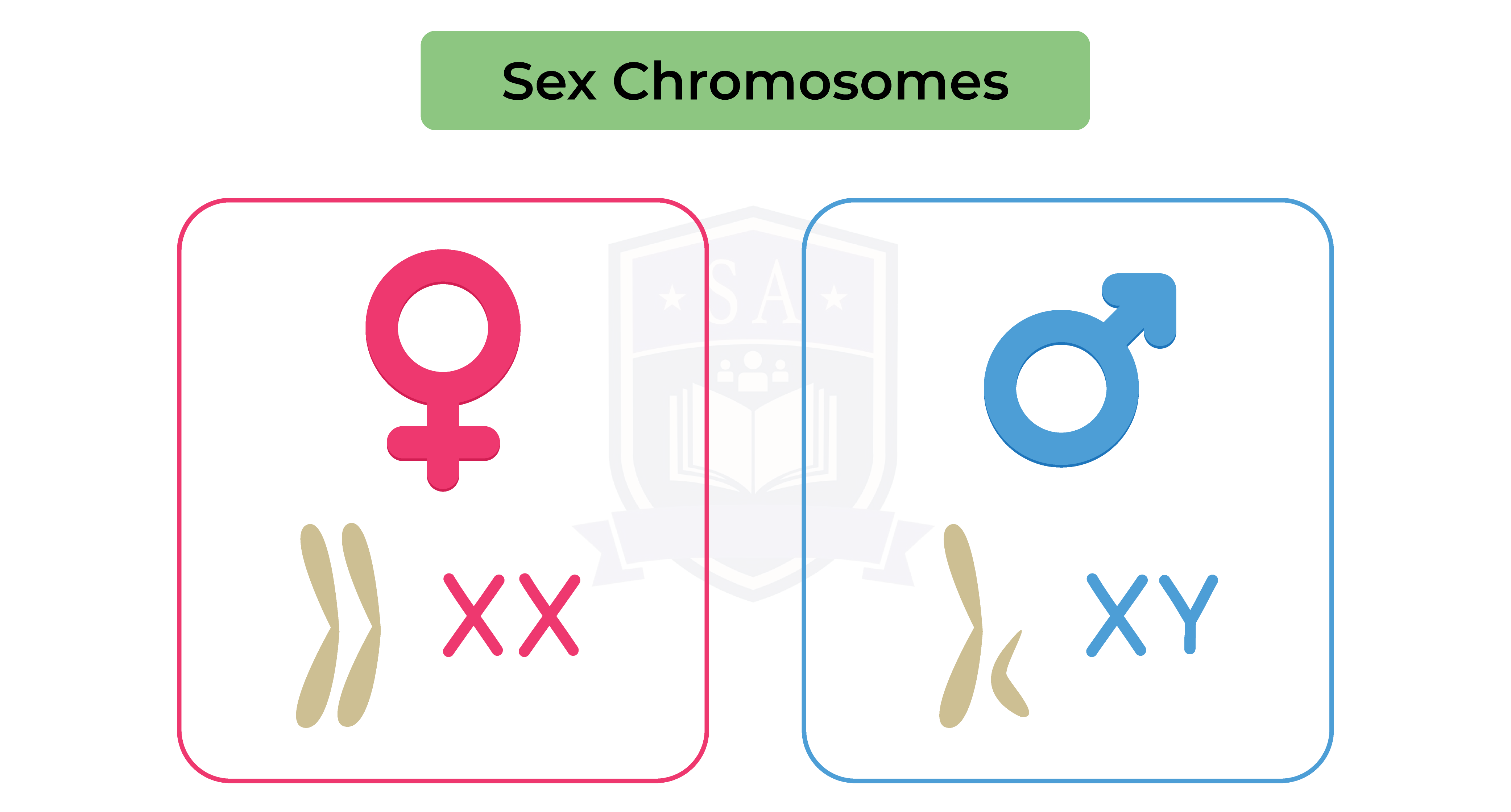
3.3.14 Describe the determination of the sex of offspring at fertilisation, using a genetic diagram
Sex determination:
- Sex at fertilisation cannot be predicted
- Based on genetic diagram there is a 50/50 chance of the offspring being male or female
3.3.15 Understand how division of a diploid cell by mitosis produces two cells that contain identical sets of chromosomes
Mitosis:
- Cell division
- Leads to the production of genetically identical cells
- Cells have two copies of each chromosome making them diploid
- Prophase: Before mitosis
- DNA replicates to create two exact copies of each chromosome known as chromatids
- Chromatids become visible
- Nuclear membrane breaks down
- Metaphase:
- Spindle formation occurs
- Chromosomes line up at the equator
- Spindle fibres attach to their centromeres (piece attaching two chromatids)
- Anaphase:
- Spindle fibres shorten
- Pull the chromatids to opposite poles of the cell
- Chromatids separate so that each chromosome is at each end of the cell
- Telophase:
- Nuclei formation at each pole of the cell
- Cytoplasm divides to produce two daughter cells
- Each daughter cell has a copy of each chromosome from the parent cell
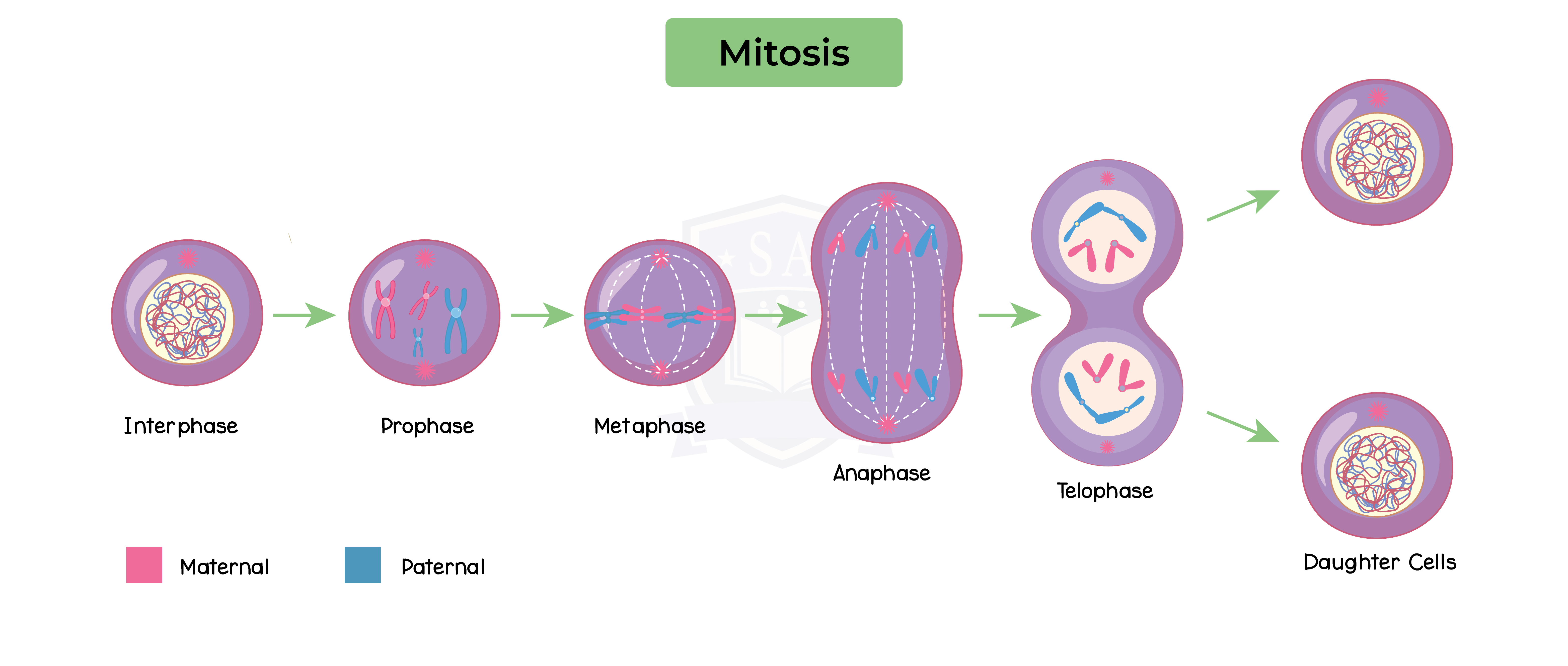
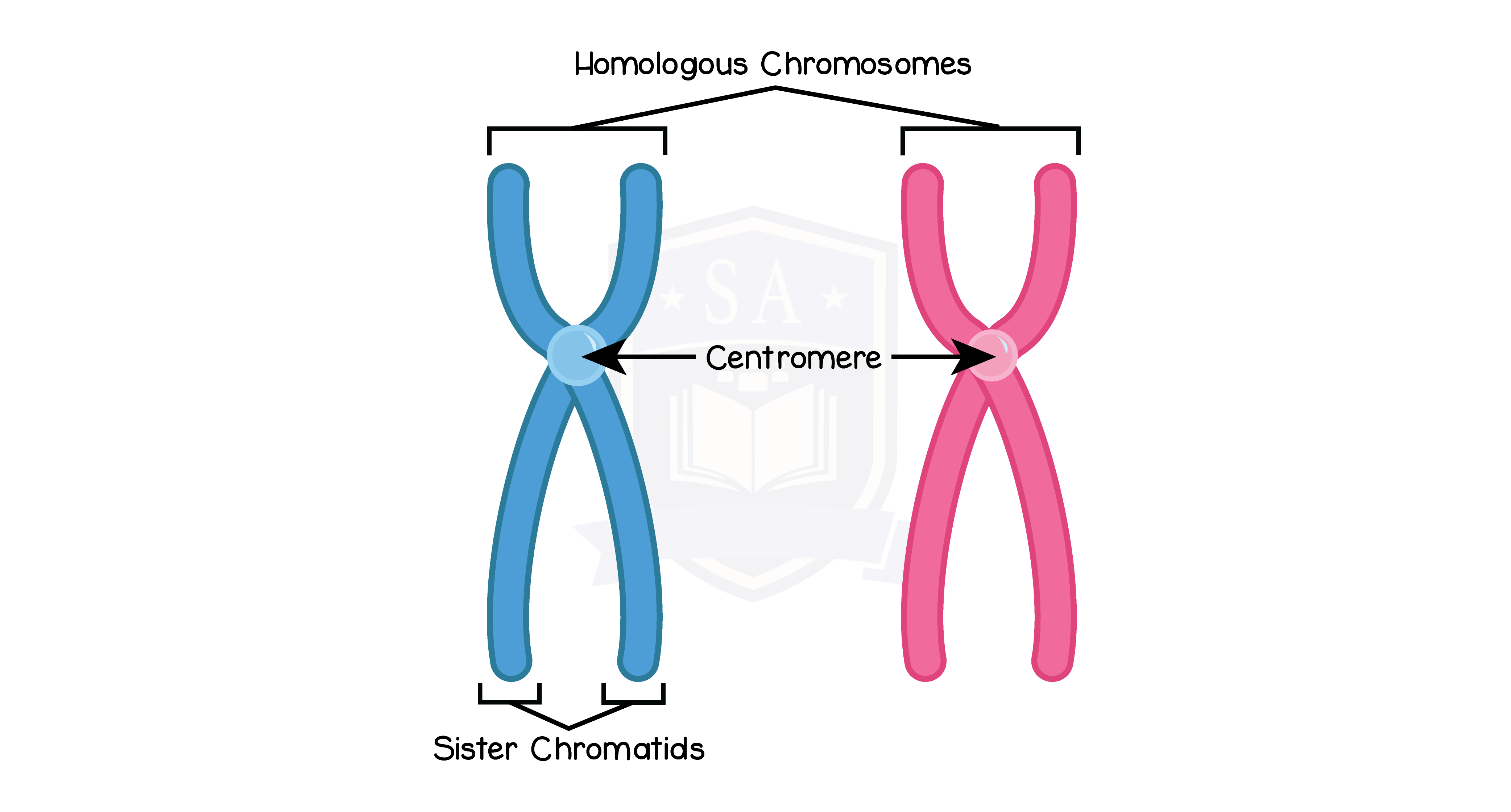
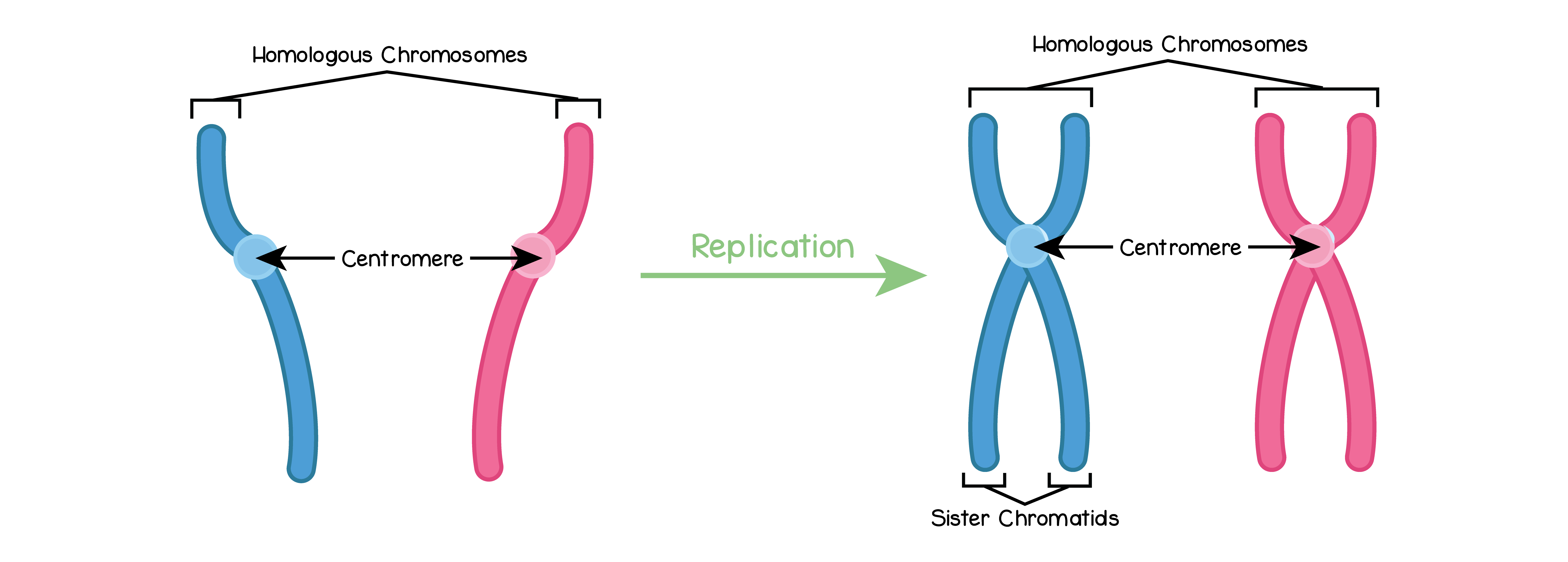
3.3.16 Understand that mitosis occurs during growth, repair, cloning and asexual reproduction
Significance of mitosis:
- All cells in the body are produced through mitosis
- Required to produce new cells for growth
- Required to replace damaged or dead cells
Used in asexual reproduction as all offspring are genetically identical to the parent
3.3.17 Understand how division of a cell by meiosis produces four cells, each with half the number of chromosomes, and that this results in the formation of genetically different haploid gametes
Meiosis:
- Creates cells that are genetically different to parent cell
- Used for the production of gametes
- Daughter cells contain half the number of chromosomes making them haploid
- So that post fertilisation cells contain one full set of chromosomes
- Halving of chromosomes occurs during meiosis
Process of meiosis:
First division: same process as mitosis
- Prophase where DNA replicates to create 2 exact copies of each chromosome
- Metaphase where each chromatid lines up at the equator
- Anaphase where each chromosome get pulled to each end of the cell
- Telophase where nuclei forms at each pole and cytoplasm divides to give 2 daughter cells
Second division: cells from the first division undergo
- Metaphase II:
- Chromosomes of daughter cells from first division line up at the equator
- Anaphase II:
- Spindle fibre attaches to the centromere of each chromosome
- One chromosome from the chromosome pair is pulled in opposite directions
- Leading to one chromosome at each end
- Telophase II:
- Nuclei forms at each pole
- The cytoplasm divides
- Each daughter cell only has 1 chromosome from each chromosome pair leading
- Formation of a haploid cell occurs
- Each round of meiosis produces 2 daughter cells in first division that then produce 2 daughter cells each in second division
- In total, meiosis produces 4 daughter cells at the end of each cycle
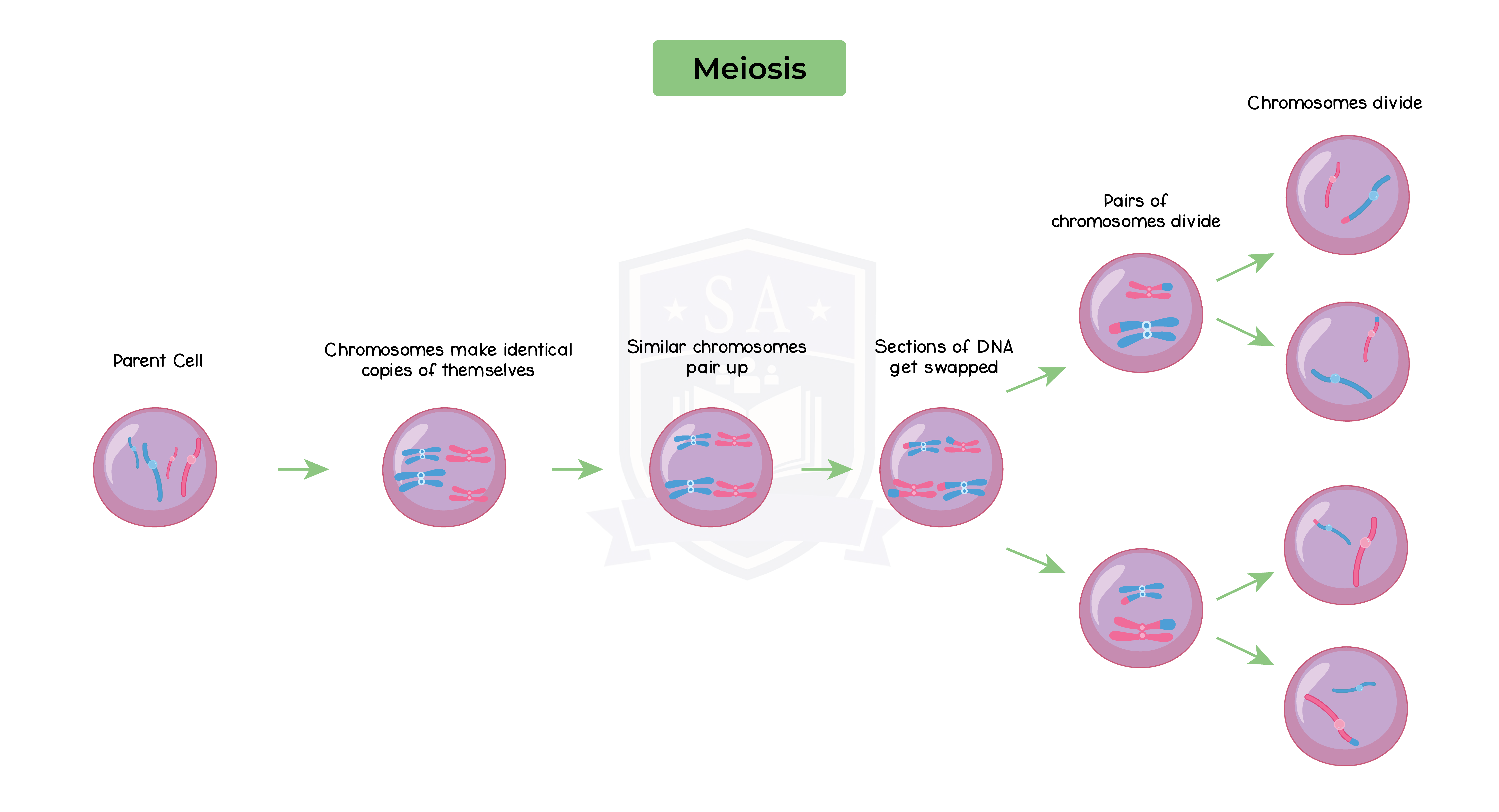
3.3.18 Understand how random fertilisation produces genetic variation of offspring
Significance of meiosis:
- Production of gametes increases genetic variation
- Daughter cells have one chromosome from each chromosome pair
- Creates variation as different combinations of maternal and paternal chromosomes are present in each gamete
- When gametes fuse randomly:
- Each offspring gets a random combination of chromosomes from each parent
- Offsprings will be different from each other
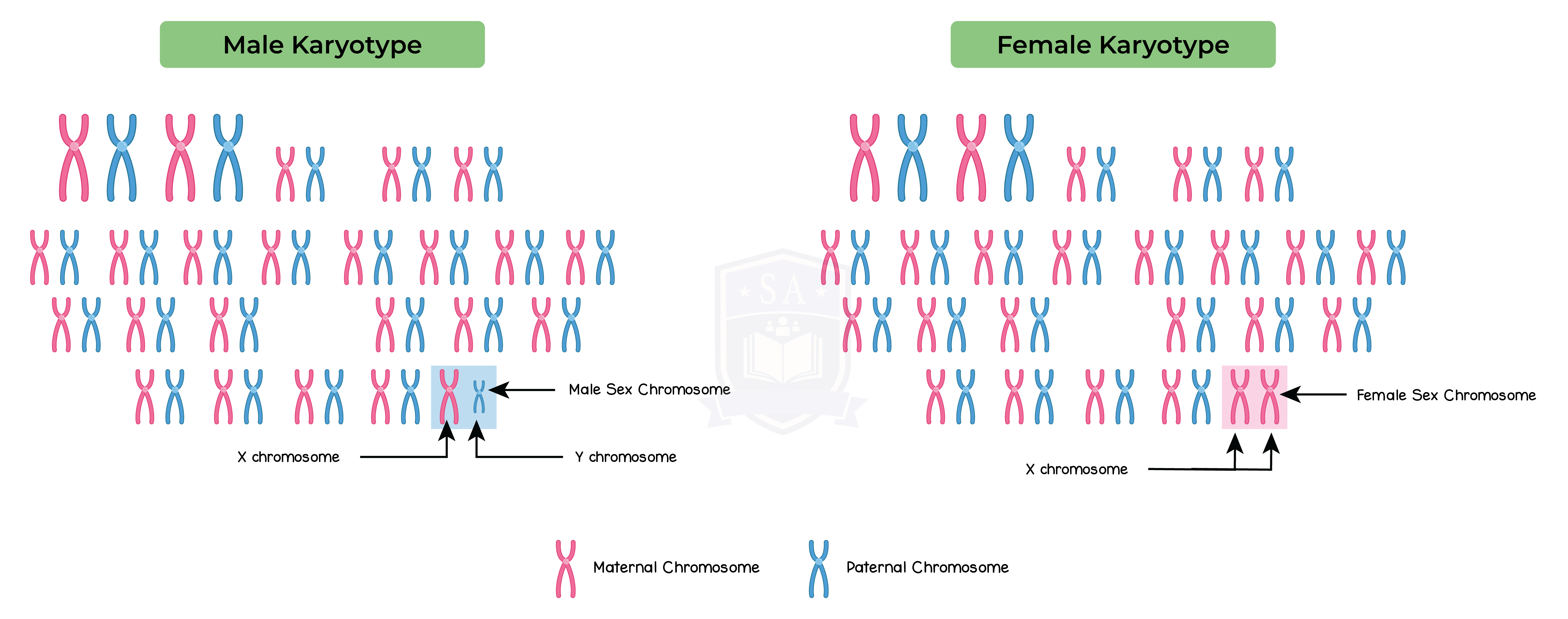
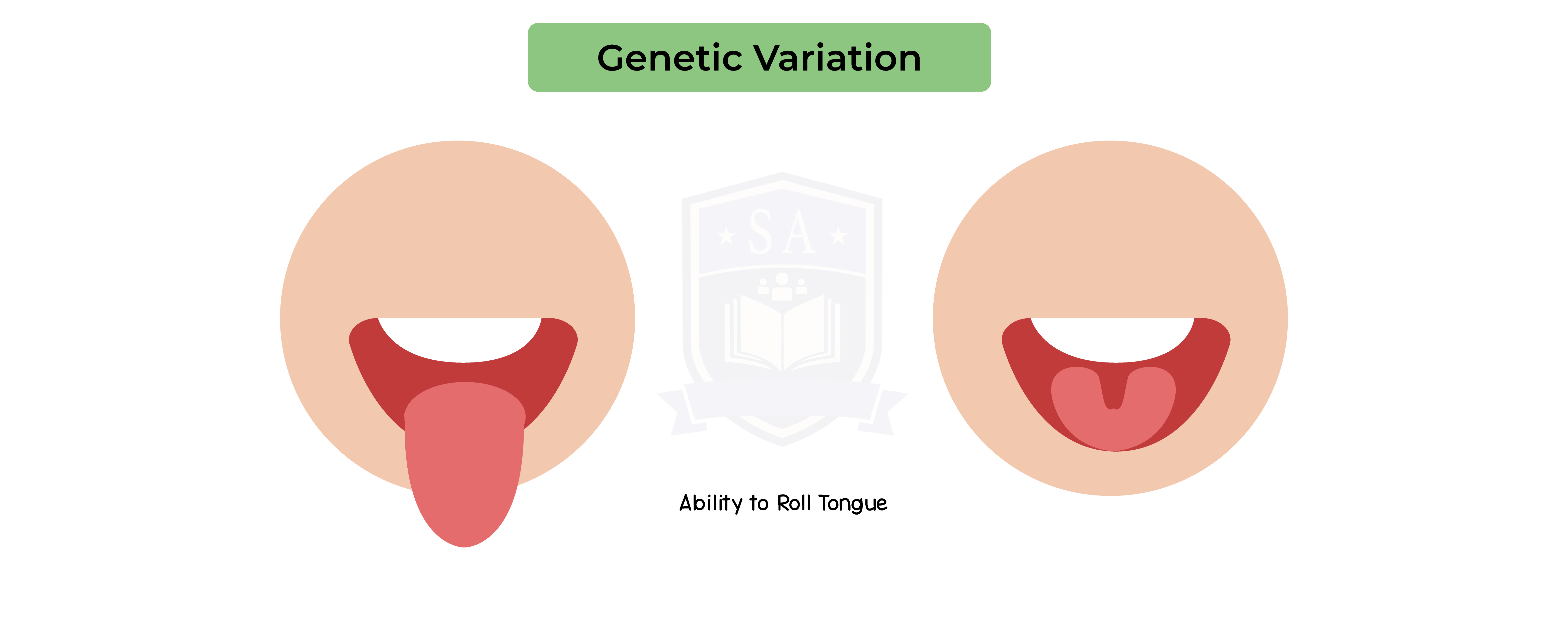
3.3.19 Know that in human cells the diploid number of chromosomes is 46 and the haploid number is 23
Diploid cells:
- Diploid cells contain the full set of chromosomes
- In humans we have 46 chromosomes
- Exist in 23 chromosome pairs
- All cells in the human body except for the gametes are diploid cells
Haploid cells:
- Haploid cells contain half the number of chromosomes
- Gametes are haploid cells that contain 23 chromosomes
3.3.20 Understand that variation within a species can be genetic, environmental, or a combination of both
Variation:
- Differences between individuals of the same species
- Two types of variations: continuous and discontinuous
- Continuous variations:
- Very small degrees of differences
- can be measured on a scale
- E.g. height, weight etc.
- Discontinuous variation
- There are a limited number of distinct variations
- E.g. blood group, gender etc.
- Variation in phenotypes can be due to:
- Genetic
- Environmental reasons
- Both
Genetic variation:
- Meiosis leads to genetic variation in gametes
- During fertilisation, any male gamete can fuse with any female gamete leading to more genetic variation
- Genetic variation can be seen in phenotypes such as:
- Eye colour
- Blood group
- Having lobed or lobeless ears
- Gender
Environmental variation:
- Exposure to changing environmental factors such as:
- Climate
- Lifestyle
- Diet
- culture
- May change phenotypes leading to further variation
- E.g. having an unhealthy diet leading to weight gain
Genetic and environmental variation:
- Discontinuous variation is usually due to genetic variation
- Both genetic and environmental factors contribute to continuous variation
- E.g. someone may genetically have a fast metabolism
- Unhealthy diets or fasting may change rate of metabolism
- Affects their ability to gain or lose weight
- Genetic variation determines the characteristics that are inherited
- Environment determines how these characteristics will develop over the lifetime
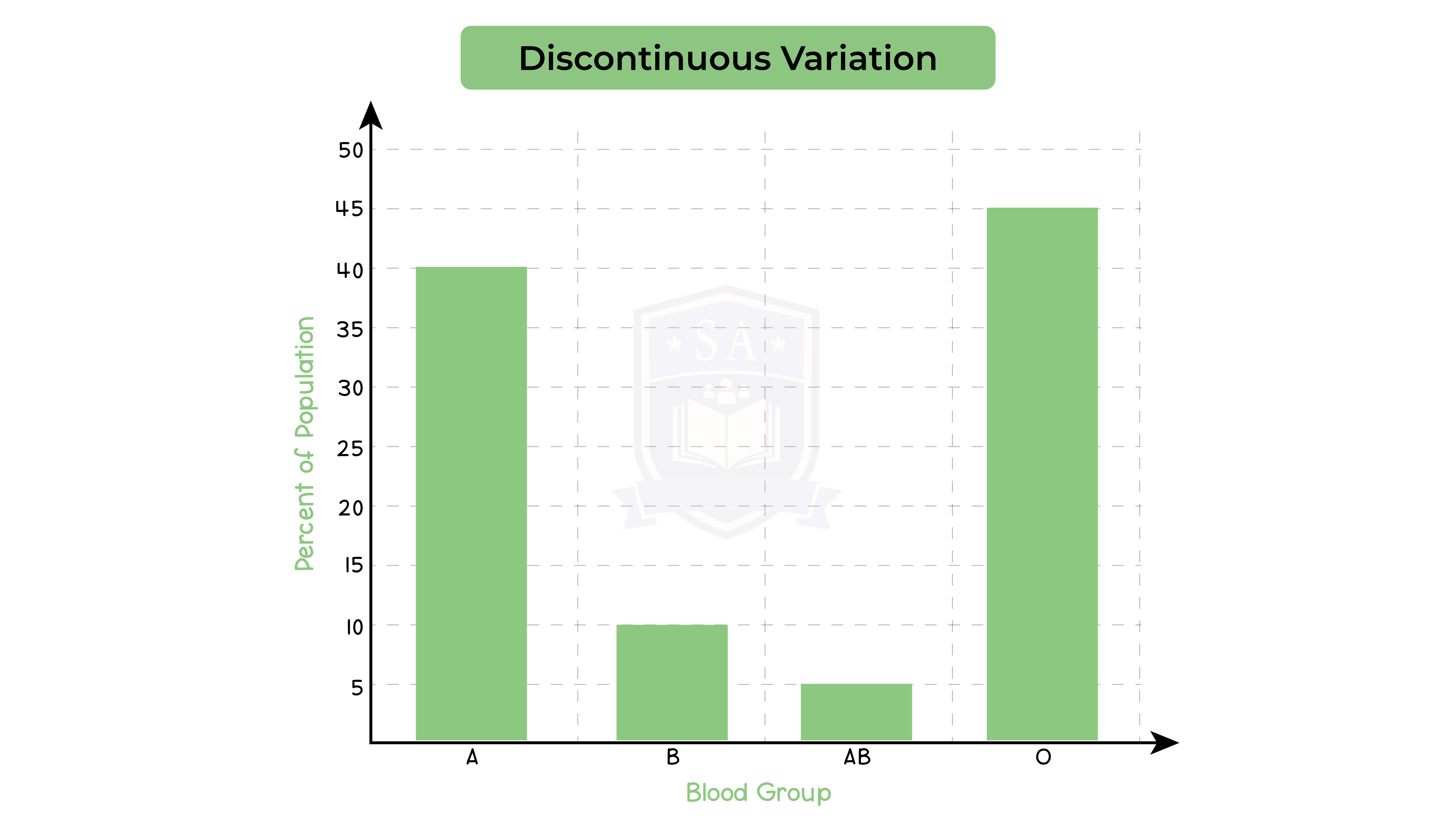

3.3.21 Understand that mutation is a rare, random change in genetic material that can be inherited
Mutations:
- Rare events that continuously occur
- Makes random changes to the sequence of our DNA
- Can be inherited If these mutations occur or are present in chromosomes of gametes
- Our DNA codes for the amino acid sequence that form proteins
- Mutations in genes can change amino acid sequence and its protein
- Mutations do not always alter protein structure or function
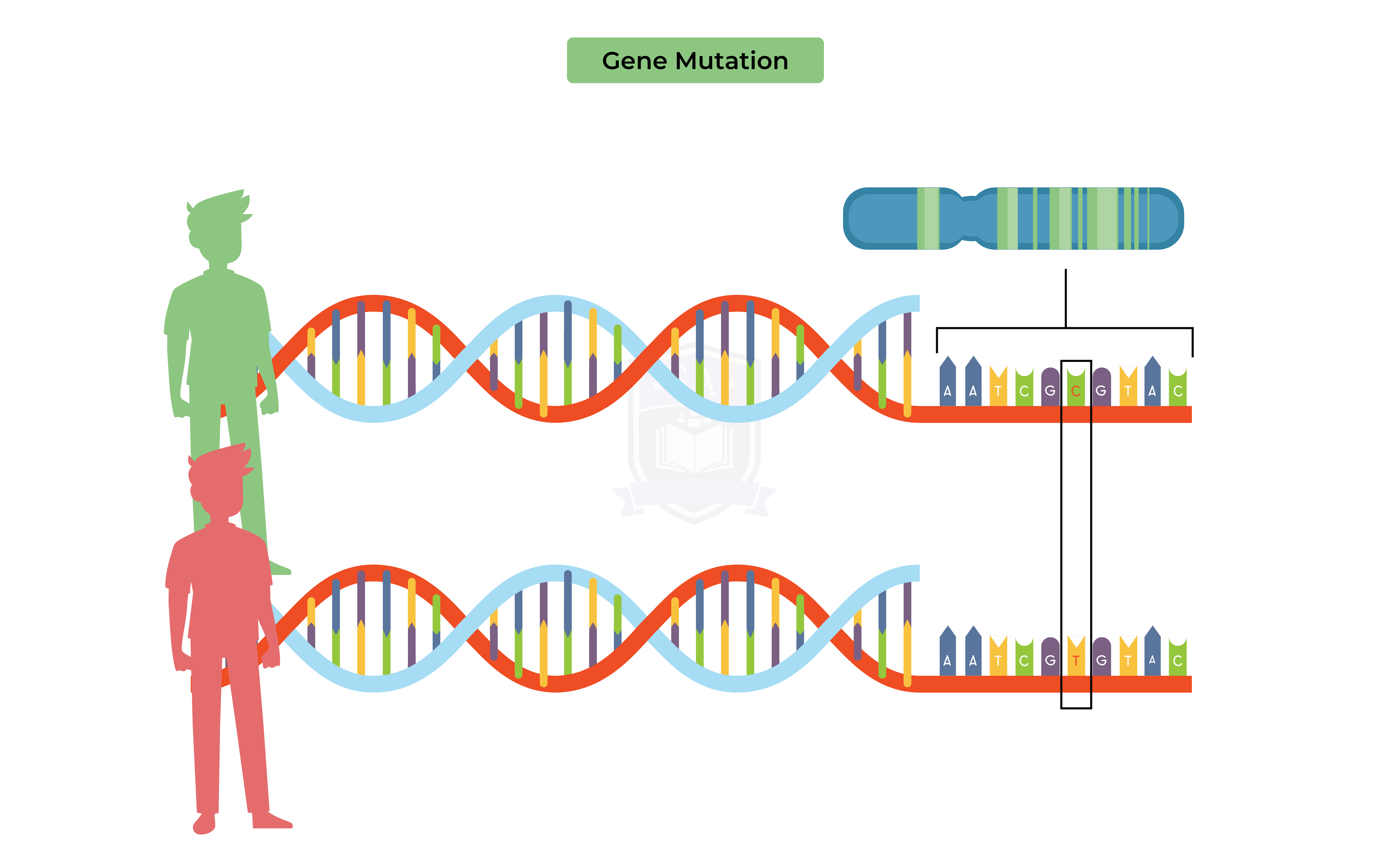
3.3.22B Understand how a change in DNA can affect the phenotype by altering the sequence of amino acids in a protein
There are 3 types of mutations:
- Insertions
- Deletions
- Substitutions
Insertion mutation:
- Random addition of a new nucleic acid in the DNA sequence
- Changes the triplet code
- Knock on effect
- It changes the triplet code for all amino acids ahead of the insertion
- Changes amino acid sequence that is coded for by that gene
- Causes a change in structure and function of protein
- Random deletion of a nucleic acid from the DNA sequence
- Changes the triplet code
- Knock on effect changing the amino acid sequence that is coded for by that gene
- Causes a change in structure and function of protein
Substitution mutation:
- A base gets replaced by a different base
- Changes the triplet code resulting in a different amino acid
- Triplet codes of the rest of the amino acids do not get affected
- May cause a difference in the amino acid sequence coded for by that gene
May cause a change in structure and function of protein but this is rare
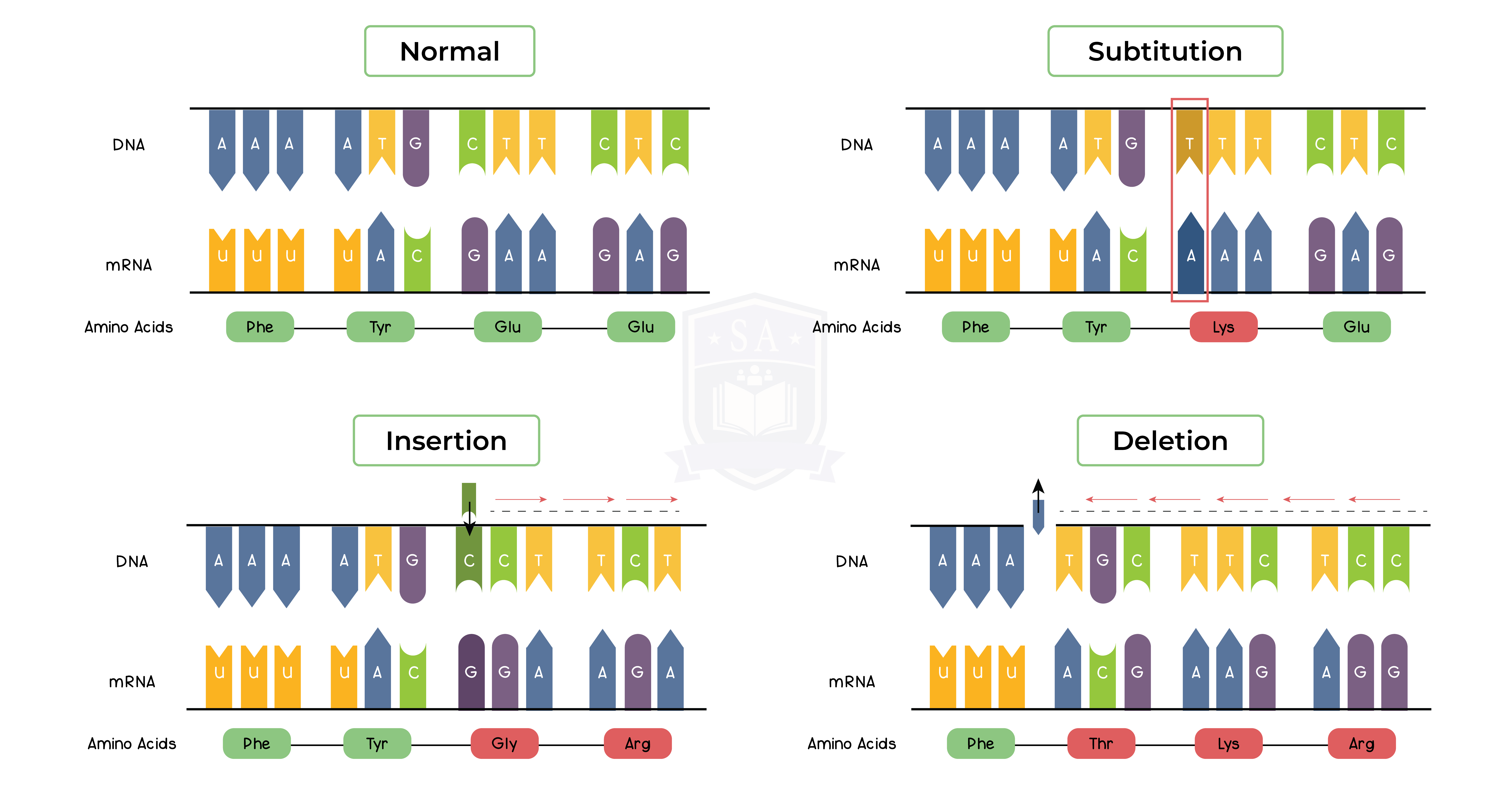
3.3.23B Understand how most genetic mutations have no effect on the phenotype, some have a small effect and rarely do they have a significant effect
Effect of mutations:
- Most mutations do not change the structure and function of proteins
- Some mutations may significantly change the shape of a protein
- Can affect its function
- Function is affected if the shape of the active site is altered
- Altered active site can no longer bind to its intended substrate
- Changes in the shape of structural proteins can lead to loss of strength
- Rarely will a mutation be significant enough to lead to the formation of a new allele
- Would lead to the expression of a new phenotype
- The new phenotype could provide a survival advantage
- E.g. birds developing a mutation that changes the colour of their feathers thus
- Makes them more attractive to birds of the opposite sex
- Increases of chances of mating
- Increases the chances of passing on the mutated gene
- The new phenotype could also be harmful by leading to inheritable diseases
- E.g. sickle cell anaemia in humans
- Led to changes in haemoglobin
- Resulted in stiff sickle-shaped red blood cells (RBCs)
- Sickled cells get stuck in narrow blood vessels thus blocking the blood flow
- Causes joint pain and may lead to stroke, blindness, damaged lungs, kidneys or heart
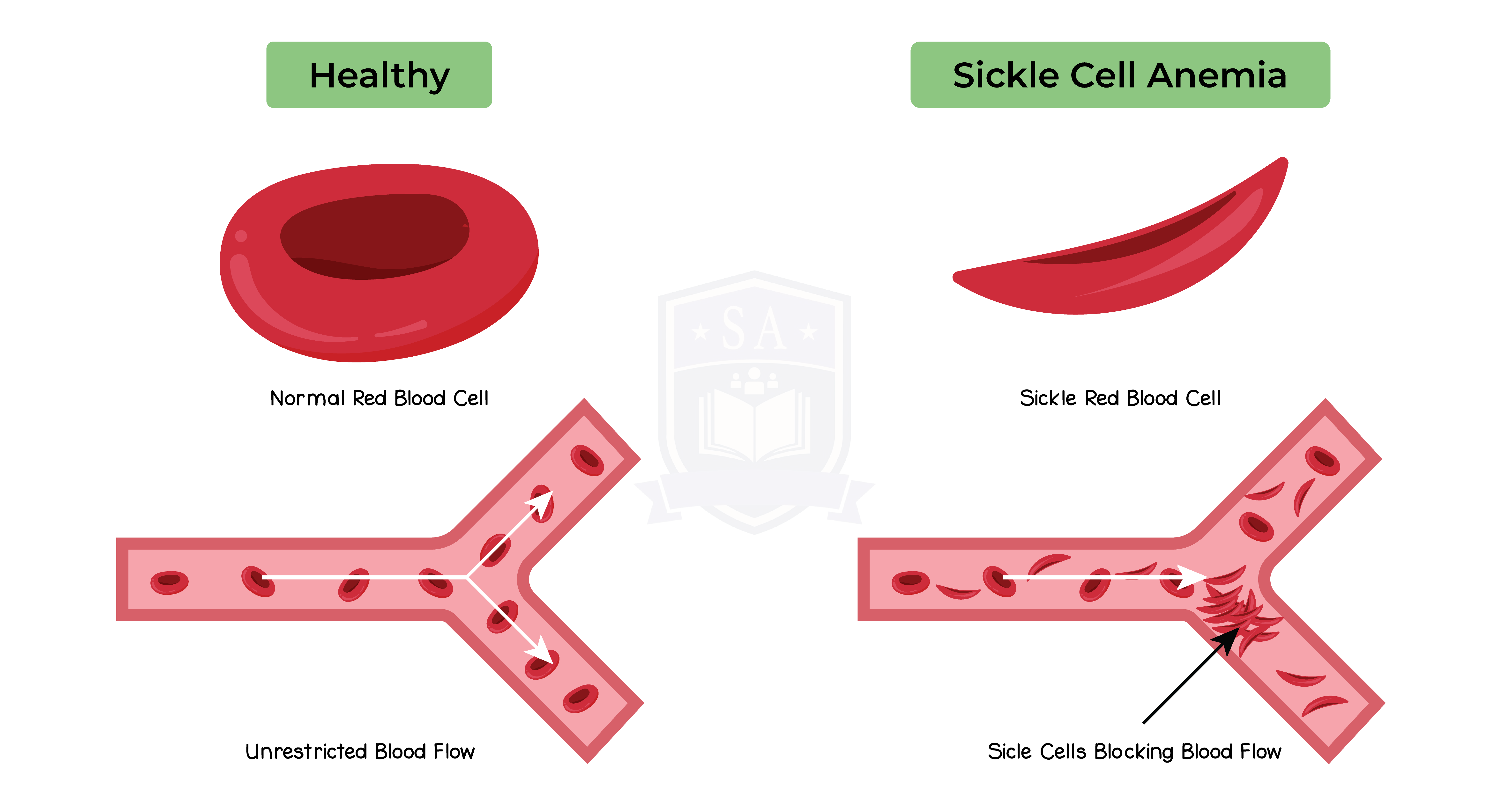
3.3.24B Understand that the incidence of mutations can be increased by exposure to ionising radiation (for example, gamma rays, x-rays and ultraviolet rays) and some chemical mutagens (for example, chemicals in tobacco)
Causes of mutations:
- The frequency of mutations is increased by exposure to:
- Ionising radiation
- Mutagens
- Ionising radiation:
- Damages bonds within the DNA leading
- Changes sequence of bases
- E.g. gamma rays, x-rays, UV rays
- Mutagens:
- Include chemicals such as the ones found in tobacco
- Includes certain chemicals in food
3.3.25 Explain Darwin’s theory of evolution by natural selection
Charles Darwin:
- Theory of evolution by natural selection
- Define evolution as change in the frequency at which a phenotype is expressed in a population over multiple generations
Darwin’s theory:
- Genes lead to a wide range of variations in individuals from the same species
- Individuals with characteristics most adapted to environment:
- Higher chance of survival
- More likely to reproduce
- Genes more likely to be passed on to the next generation
- Over time, advantageous traits accumulate and become more common within the population
The environment therefore, naturally selects for individuals most suited to it
3.3.26 Understand how resistance to antibiotics can increase in bacterial populations, and appreciate how such an increase can lead to infections being difficult to control
Antibiotic resistance:
- Due to the overuse of antibiotics
- Bacterial species form random mutations in their DNA
- Mutations may make them resistant to an antibiotic
- In infected individuals:
- Selection pressure from treatment with antibiotics
- Some of the bacteria would gain resistance due to mutations
- Bacteria would survive the antibiotic treatment
- Increases the population of resistant bacteria
- When it infects the same or another individual, a new antibiotic would be needed to treat it
- E.g. Staphylococcus aureus has developed resistance to methicillin (MRSA) which can infect wounds and is difficult to treat
Preventing antibiotic resistance:
- Prevent prescribing antibiotics unless needed
- Avoid using antibiotics for non-serious infections
- Don’t use antibiotics for viral infections
- Finish the whole course of antibiotics to ensure all bacteria of that strain are dead including the slightly resistant ones
- Prevent usage of antibiotics in other industries such as agriculture
